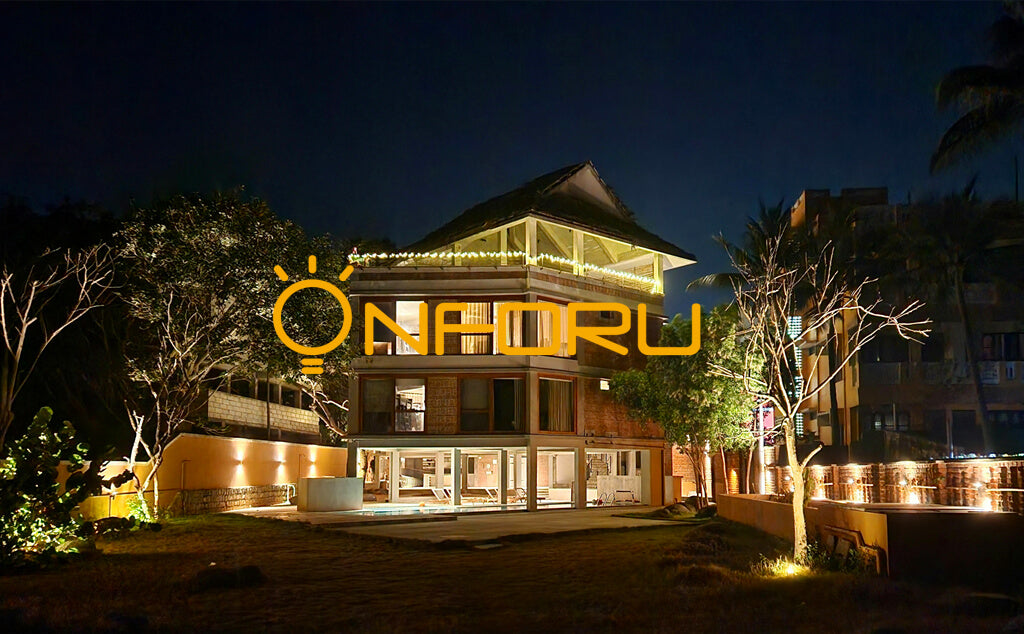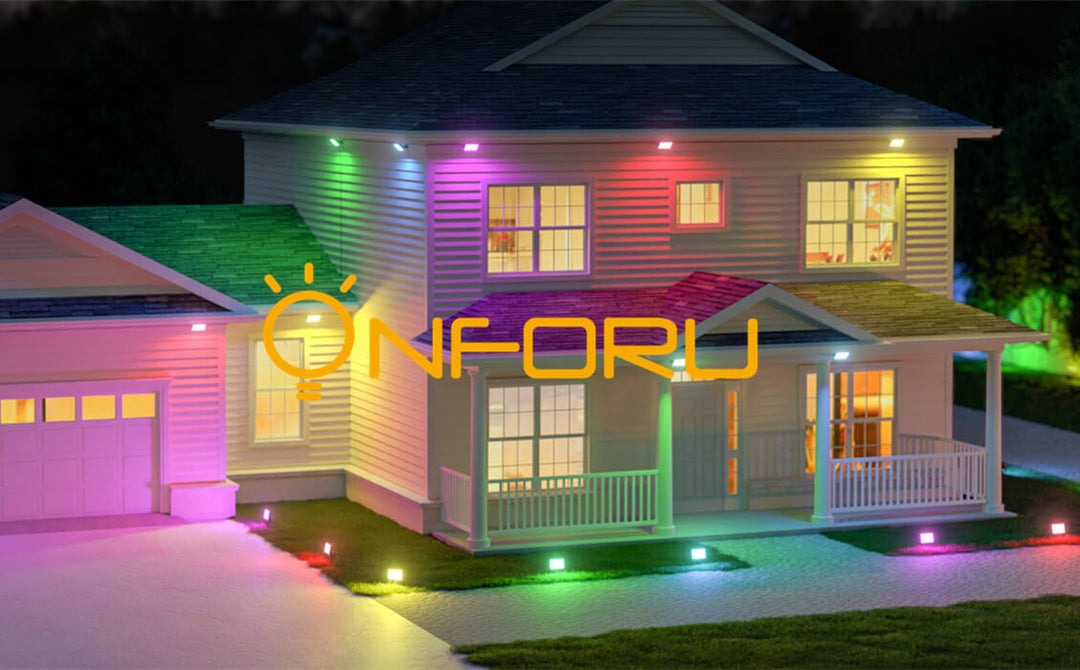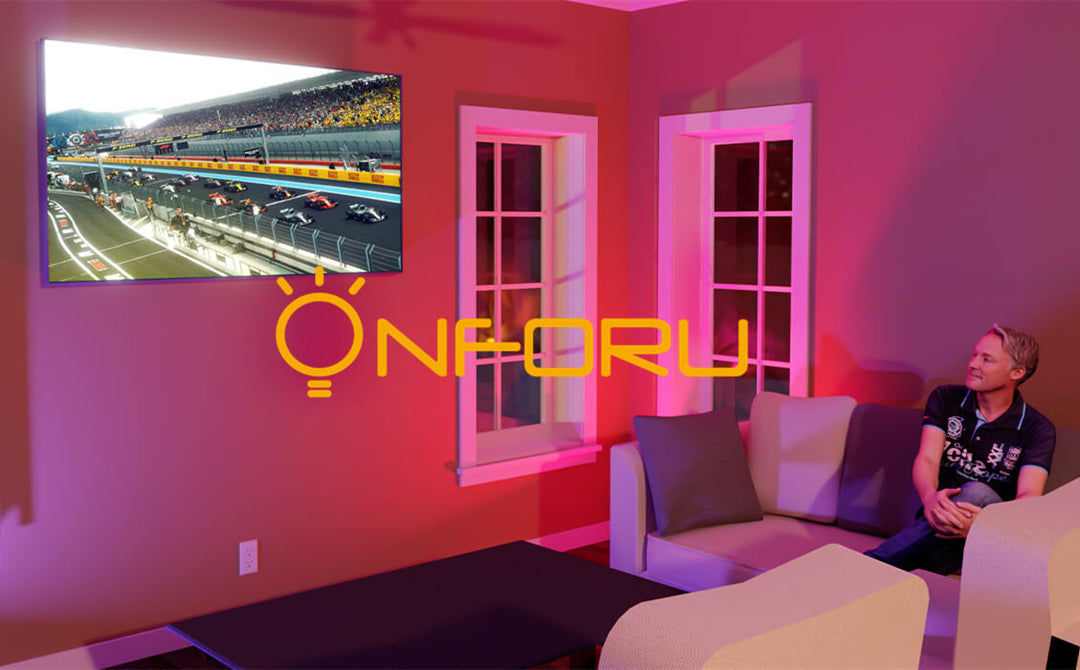LED Strip Lights – Everything You Need to Know

Flexible LED strip lights as an accent lighting are used in a wide variety of industrial, commercial and residential lighting projects around the world. LED strip lights is popular among many architects and lighting designers due to the energy savings, rich color variation and increased brightness.
The biggest appeal of LED strips light is their ease of installation. Their flexibility, low profile and versatile accessories make them the most popular LED strip lights in the home DIY genre. With these LED strip lights, homeowners can design and install them themselves, just like professional designers.
What Is LED Strip Light?
An LED strip lights (also known as an LED tape lights or ribbon light) is assembled on a strip of FPC (flexible circuit board) or PCB hard board, named because the shape of the product is like a strip. Because of the long service life (generally normal life of 80,000 to 100,000 hours), but also very energy efficient and green and gradually in a variety of decorative industry to emerge.
How Does LED Strip Light Work?
Each section of LED strip lights is a unit, each unit has a fixed number of light-emitting diodes and distributed current-limiting resistors, which should be cut off by unit when cutting, otherwise this section will not light up. Each unit is connected separately in parallel to bear the power supply voltage, there are DC 200V, 24V, 12V, 5V, etc.. Among them, the power supply is connected to the strip with positive and negative polarity.
What Are the Common LED Strip Lights?

LED strips are routinely divided into two types of flexible LED strips and LED hard strips.
- Flexible LED strip is using FPC to do assembly circuit board, assembled with SMD LED, so that the thickness of the product is only 0.1CM thickness, does not occupy space. Can be cut at will, any extension and light is not affected. The FPC material is soft, can be bent, folded, wound at will, and can be moved and expanded in three dimensions without breaking. It is suitable for irregular places and small spaces, and because it can be arbitrarily bent and wound, it is suitable for advertising decoration in any combination of various patterns.
- Hard LED strip is to use PCB hard board to do assembly circuit board, LED useful for SMD LED for assembly, also useful for straight LED for assembly, depending on the need and use different components. The advantage of a hard light bar is relatively easy to fix, and processing and installation are more convenient; the disadvantage is that it can not be bent at will, not suitable for irregular places.
What Are the Features of LED Strip Lights?
- Soft, can be curled at will.
- Highly DIY, can be cut and extended connection.
- LED lights and lines are thoroughly wrapped in flexible plastic, insulation, waterproof function is good (partly not), high security.
- Strong weather resistance.
- Not easy to crack, long life.
- Easy to make graphics, text and other shapes, buildings, bridges, pathways, gardens, courtyards, strata, furniture, buses, lakes, underwater, posters, signs, etc.
What Are the Color Types of LED Strip Lights?

Color temperature is a way to describe the color of light emitted by a light source. It is measured in degrees Kelvin, with lower color temperatures being a warm yellow-red, and higher color temperatures showing a blue tint.
- 2700K: Soft White Light, Ideal for bedrooms and other indoor applications where a warm, inviting atmosphere is needed.
- 3000K: Warm White Light, Areas that require a slightly more vibrant environment can benefit from 3000K color temperature LED strips light. Museums, art galleries, restaurants, hotels and other high-end spaces are also excellent choices for this color temperature.
- 4000K: Daylight White, Most retail installations and store interiors are a good place to install 4000K. Often considered the midpoint between warm and cool whites, this is a good compromise if you don't like the harshness of cool whites but want to avoid too much yellow in warm white spaces.
- 6500K: Super Cool White Light, Applications that need to simulate natural daylight should use 6500K. Film, photography and industrial applications should fall into this category.
What Determines the Brightness of the LED Strip Lights?
The brightness of LED strips is determined using metric lumens. Unlike incandescent bulbs, different LED strip light can have different efficiency levels, so power ratings are not always meaningful when determining actual light output.
LED strip light brightness is usually expressed in lumens per foot (or meter). A quality LED strip should provide at least 450 lumens/foot (1500 lumens/meter).
The brightness of LED strip light is determined by three main factors.
- Light output and efficiency of each LED emitter.
- Number of LEDs per foot.
- Power consumption per foot of LED strip.
LED strip lights without lumen brightness specifications are red flags. You also need to be aware of low-cost LED strips that claim high brightness because they can drive the LEDs into overdrive to the point of premature failure.
How to install LED strips?
The best way to mount LED strips is in an aluminium channel.
Step 1: Choose a channel shape that is beveled or flat, preferably with a diffuser cover or clear cover. Make sure that the channel is selected to fit the strip as the widths are different.
Step 2: Use a hacksaw or electric miter saw to cut the soft aluminium channels.
Step 3: Mount the channel securely using screws.
Step 4: Position the strip in the channel and close the cover.
Benefits of installing LED strips in the channels
- Provides an even surface for the adhesive of the strip to form a strong, long-lasting bond.
- Aluminium is used as a heat sink and helps dissipate heat to extend the life of the LEDs.
- The plastic cover will scatter the light. This gives a more even appearance to the light coming from the LEDs.
- The cover also helps to protect the strip from dust and damage.
- The clean lines of the channel help make the installation look better if the LED strip is in clear view.
Perhaps you will encounter a situation where the adhesive of the strip will not hold for a long time. It will usually stick initially. But sometimes the adhesive will fail after a few months. To ensure that the adhesive does not come loose, you must use hot glue regularly.
FAQs of LED Strip Lights
Are LED Strip Lights Worth the Money?

The biggest reason people like to use LED lights is their efficiency. They save considerable energy costs and last a very long time. LED strip light add a major difference to the look of a room and are very easy to install. Many people see LED lights as the future of lighting because they are so efficient. Easy to install and more energy efficient.
However, when you consider how efficient LED strip lights are, the cost is worth it. They last much longer than other types of lighting. You don't have to replace them as often. Therefore, you will pay much less in the long run.
How Much Electricity Does an LED Strip Lights Use?
Compared to traditional incandescent lamps, LED strips do not require a large amount of electricity. The consumption is directly determined by the length and light density of the strip. A standard 5 meter strip costs less than $3 per year to run on average.
If you use LED bulbs for 10 hours a day, they can last for more than 10 years! In contrast, incandescent bulbs last only 100 days. The amount of electricity used by a bulb is measured in kilowatt hours.
LED bulbs use 127.5 KWh over their 15,000 hour lifetime. incandescent bulbs will consume 900 KWh of electricity over 15,000 hours (in theory; incandescent bulbs don't last that long).
How Long Can Leave the LED Strip Light On?
We all forget to turn off our lights from time to time, but don't make a habit of it. Leaving your LED lights on all night will eventually affect their lifespan. Installation can also affect the life of your LED strip. Any bends, creases or unusual applications can affect the diodes and circuitry. Cutting and extending the strip can also cause voltage drops and affect the quality of the strip.
Or if you do need to keep your LEDs on for an extended period of time, it's important to make sure you understand the environmental and safety risks associated with long-term use. Well-made LED lights are durable enough to be used 24 hours a day, 7 days a week. That's because, unlike traditional types of lights, LEDs produce the least amount of heat, which means they're less likely to overheat or catch fire.
Most LED strip lights have a life expectancy of 20,000 to 50,000 hours. This depends on your specific installation, the products you use, and how often you use them.
What LED strip color temperature should I choose (choose the right brightness)?

There is no "best" color temperature when selecting LED strips. This is because for each type of application, a different type of light is required. The following are the most common color temperatures and their potential uses.
2700K: Ideal for bedrooms and other indoor applications where a warm, inviting atmosphere is needed.
3000K: Areas that require a slightly more vibrant environment can benefit from 3000K color temperature LED strips light. Museums, art galleries, restaurants, hotels and other high-end spaces are also excellent choices for this color temperature.
4000K: Most retail installations and store interiors are a good place to install 4000K. Often considered the midpoint between warm and cool whites, this is a good compromise if you don't like the harshness of cool whites but want to avoid too much yellow in warm white spaces.
6500K: Applications that need to simulate natural daylight should use 6500K. Film, photography and industrial applications should fall into this category.
Which LED Strip Lights Color is Best for My Eyes?
Two factors to consider when selecting LED strip colors are color temperature and color rendering index.
Cool LEDs have high lumens and can be stressful to the eyes, while warm white LEDs are pleasant and good for the eyes. The temperature range of LEDs is 4500k, which is the natural light range and is good for the eyes.
The color rendering index shows how clear an object is in light, and good LED strips have a high color rendering index to show how an object looks in natural light. Warm white LEDs have a CRI of over 90, while cool white LEDs are over 62. Warm white LEDs provide better results for your living room or living room, while cool white LEDs are best for kitchens and dining areas.
What Factors Will Affect the Life of LED Strip Lights?
- LED is an electrostatic sensitive device. If you do not take anti-static measures when repairing LED strip, it will burn out the LED and cause waste. Of course, the life of the LED strip is not guaranteed.
- If the copper wire or flexible circuit board of the LED strip is not tough enough, it will cause the LED strip to break when it is bent. This will also affect the life of the LED strip.
- LED strips are generally powered by a constant voltage power supply (DC switching power supply). If the power supply output is unstable, or there is no surge protection, when the external network voltage fluctuations, it will output unstable voltage and current, resulting in the LED strip working at a non-standard voltage. This way will also affect its life.
- LED is a constant current component, so the constant current effect of LED strips from different manufacturers is not the same, and the life expectancy is also different.
What is the CRI index of a qualified LED strip light?
When purchasing and installing white LED strips, we recommend a CRI of over 80, good color rendering, and most colors will render well. Suitable for most commercial uses.
Lighting with a CRI below 80 will exhibit poor color rendering. In this light, items and colors may look unsaturated, monotone, and sometimes unrecognizable, making it difficult to distinguish between similar colors.
Onforu LED strips all have a color rendering index over 80, with good color rendering and most colors can be rendered well.
Ready to install LED strip lights in your home or commercial space?
ONFORU has a range of high quality, brightness LED strips for you to choose from. Daylight white LED strip lights, warm white LED strip light, black light strip lights, RGB strip light and string lights.
More Resources
- LED Strip Light Complete Buying Guide
- How to Choose A Best LED Strip Lights?
- How to Install LED Strip Lights - The Easiest Guide
- The Best Sellers of Onforu LED Strip Lights 2022
- Best Colorful RGB Strip Light 2022 - Great Ambiance for Light
- The Best Indoor LED Strip Light Ideas that Can't be Missed
Video Resources





The 3M provide tape on the back of the lamps works best when the surface is cleaned with isopropyl alcohol before ahereing the lamps.
Leave a comment